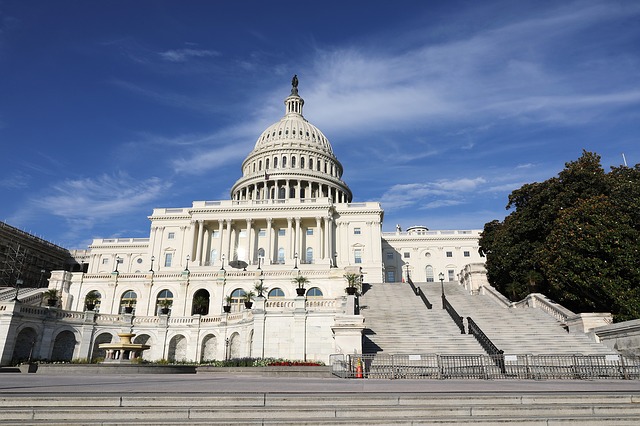Earlier this year, President Donald Trump issued a memo to the Education Department recognizing the connection between STEM skills and high-paying jobs and instructing officials to devote at least $200 million per year in competitive grant money towards high-quality STEM education.
“We hear a lot in bombastic headlines in the media about, ‘Oh, we’re slashing education,’” said Lindsey Gardner. “And I hope to quell some of those fears […] because while you may be hearing some scary things, we’re hearing some good things as well.”
Gardner, the director of external relations for the STEM Education Coalition, gave attendees at SmartBrief Education’s 4th annual STEM Pathways Summit an update about federal legislation affecting STEM education funding. Check out these takeaways from her presentation:
K-12 STEM policy and ESSA funding streams
Several sections of The Every Student Succeeds Act offer space for increased support of STEM in schools, Gardner said. Specifically, certain aspects of Title I, Title II and Title IV-A of ESSA could be used to improve STEM funding in schools.
Title I
Title I of ESSA addresses school accountability and improvement. The primary opportunity for increased attention to STEM education under Title I is for STEM indicators to be incorporated into states’ accountability systems, Gardner said, adding that funds could go toward both reform plans that support STEM instruction in struggling schools and increased learning opportunities for low-performing students.
Title II
Title II of ESSA specifies acceptable forms of training and professional support for teachers. Through Title II funding, STEM educators could take courses to stay up to date with emerging STEM concepts and relevant education technology. In addition, funds could be used for preparing preschool and elementary-school instructors to teach basic STEM concepts.
A final a possible application of Title II funds, Gardner said, could be in a differential pay scale among teachers, which would give priority to STEM subject teachers.
“When we [The STEM Education Coalition] talk to our teacher groups that are members, we hear over and over again that they’re struggling to get enough highly-trained, highly-qualified STEM teachers into areas where they’re needed the most, because, unfortunately, low-income schools have a hard time offering incentives,” Gardner explained. “So now you can use federal funds to offer those incentives, which is a great option for rural or low-income school districts that are having a hard time recruiting professionals in this area.”
Unfortunately, the STEM Education Coalition is seeing less enthusiasm for Title II funding than they’re seeing with Title I and Title IV-A of ESSA. “This large pool of money, which last year was $2.1 billion, was proposed to be completely cut by the president and by the House of Representatives,” Gardner said. “The Senate went the opposite direction and wants to keep up full funding, so hopefully they’ll [Congress will] either continue with full funding or meet somewhere in the middle.”
Title IV-A
Title IV-A of ESSA encourages a well-rounded education via student support and academic enrichment grants. $1.65 billion has been authorized by Congress for grants under Title IV-A. Uses for this grant money vary,but Gardner pointed out 10 important STEM-related allowable uses. “Now you can use federal funds for things like robotics competitions for your kids to participate in, hands-on learning, environmental education and integrating with after-school enrichment providers and classroom teachers,” Gardner explained.
Gardner seemed optimistic about Title IV-A funding, saying, “This is the one program that I’ve seen that Congress has actually proposed to spend more money on … [E]very school district in the country could get a chunk of money that they could spend, and it would actually go directly to the school district.”
Especially regarding Title IV-A funds going toward new enrichment programs, Gardner urged attendees to share successes with policymakers. “If you have students in your classroom, or you as a district administrator are seeing good things coming out of this funding, make sure you tell your member of Congress so that they have stories to go back to Congress,” she said. “With new programs, that’s what we’re really lacking here in DC; we don’t have an evidence-based approach yet.”
Teresa Donnellan is an editorial assistant at SmartBrief. Stay tuned for Part II of this STEM policy update coming soon.
____________________________________
Like this article? Sign up for ASCD SmartBrief to get news like this in your inbox, or check out all of SmartBrief’s education newsletters, covering career and technical education, educational leadership, math education and more.
